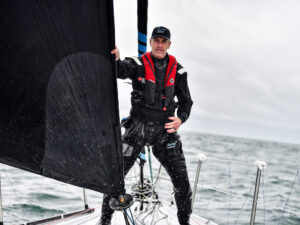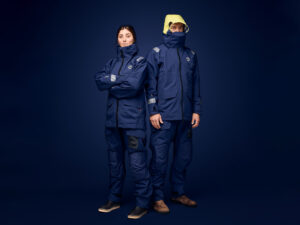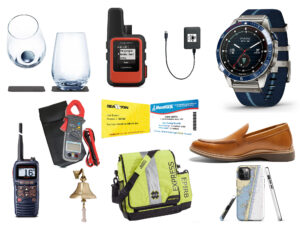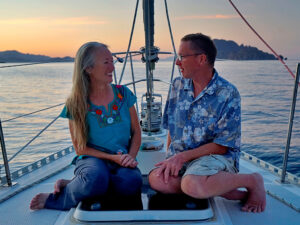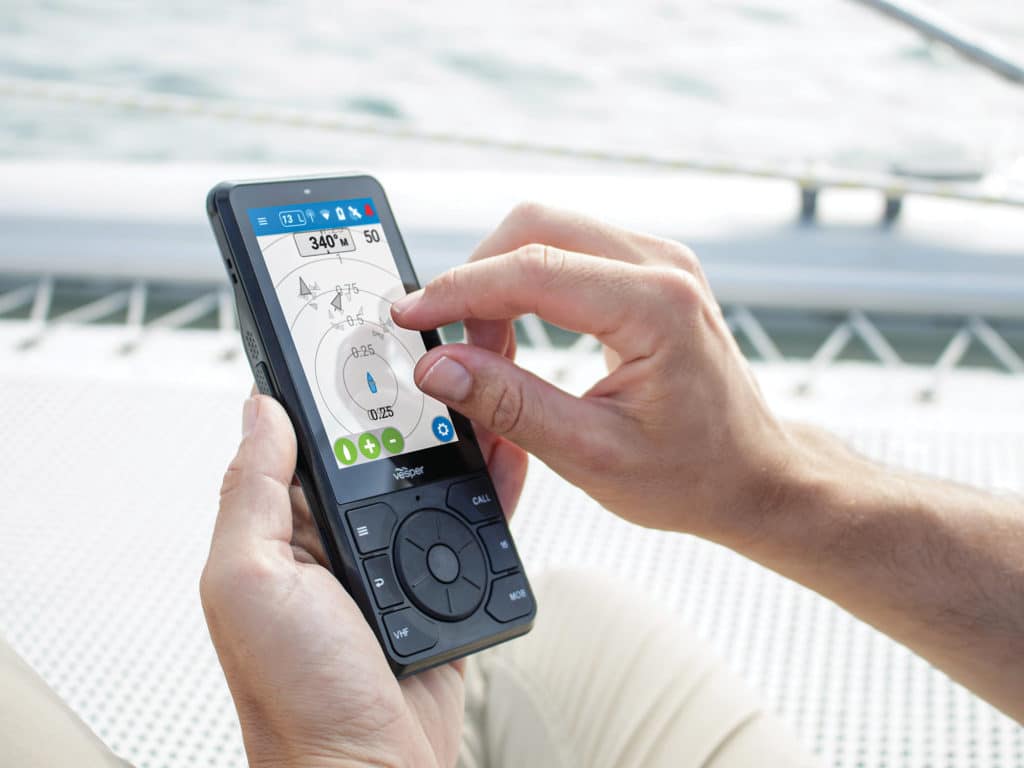
Fourteen to 18 knots of southerly breeze flowed across Puget Sound on a gorgeous day this past summer. My friend Jonathan had invited me to go daysailing aboard Dark Star, his Riptide 44. We hoisted the square-top main and jib, and sailed uphill from Seattle’s Shilshole Bay Marina past West Point Lighthouse. Glancing at the angle to Port Madison, where we were headed, Jonathan decided that we should hoist the spinnaker. Perfect!
We were soon ripping toward Port Madison at 11 to 12 knots. Then we noticed a container ship plying the southbound Vessel Traffic System lane. Given that our hands were full of sheets and steering wheels, I was relieved to glance at the chart plotter and see—via the boat’s Automatic Identification System—that the ship was passing clear east of us.
While AIS has been keeping sailors safe since 2008, newer technologies, including more-capable AIS Class B transmitters and updated hardware, are making AIS safer, more intuitive and more robust.
Better still, upcoming regulatory changes to the way AIS interfaces with the rest of the electronic-communications ecosystem are poised to make cruising safer and even more data-rich.
What’s coming next started back in 2002, when the International Maritime Organization began requiring most internationally bound commercial vessels to employ Class A AIS transmitters. This equipment dynamically broadcasts vessel AIS information (such as vessel name, position, course, speed and Maritime Mobile Service Identity) on two dedicated AIS channels: VHF channels 87B and 88B. The information is broadcast every two to 10 seconds, based on vessel speed, at 2 or 12.5 watts. Class A AIS operates on the self-organized time-division multiple access (SOTDMA) channel-sharing scheme, which is coordinated within the AIS transmission hierarchy.
In 2006, the AIS standards committee announced specifications for Class B AIS transmitters, which were aimed primarily at recreational mariners. These became commercially available in 2008. Class B AIS also broadcasts on the same two channels, but at 2 watts and a static reporting rate of once every 30 seconds, using the carrier sense time division multiple access (CSTDMA) scheme. Hence the designation Class B/CS.
While the acronyms are alphabet soup, the important bit is that SOTDMA transmitters pre-announce the AIS channel time slots that they intend to employ and then broadcast accordingly, whereas CSTDMA systems “politely” listen for open slots. If an opening doesn’t exist when a CSTDMA transmission is timed to transpire, it retries 10 random times and then waits—in 30-second increments—for a window. In crowded waters, this scheme can sometimes equate to several skipped transmissions. While this is irrelevant for a sloop that’s sailing at 5 knots and can still listen for incoming AIS signals, it’s a bigger concern aboard rides that can cruise in the low to mid-20s, or faster.
Class B/SO transmitters arrived in 2013, offering several advantages. They use the SOTDMA scheme and report their AIS information once every five to 30 seconds at 2 or 5 watts of power. While Class B/SO transmitters were initially aimed at non-SOLAS-class vessels, their bolstered transmission power increases their range, and their SOTDMA channel-sharing scheme helps ensure that more transmissions will be heard by other AIS users in busy waters.
“Everything we make now is on the newer platform,” says Jim McGowan, Raymarine’s Americas marketing manager, referring to Class B/SO technology. Other leading manufacturers do the same.
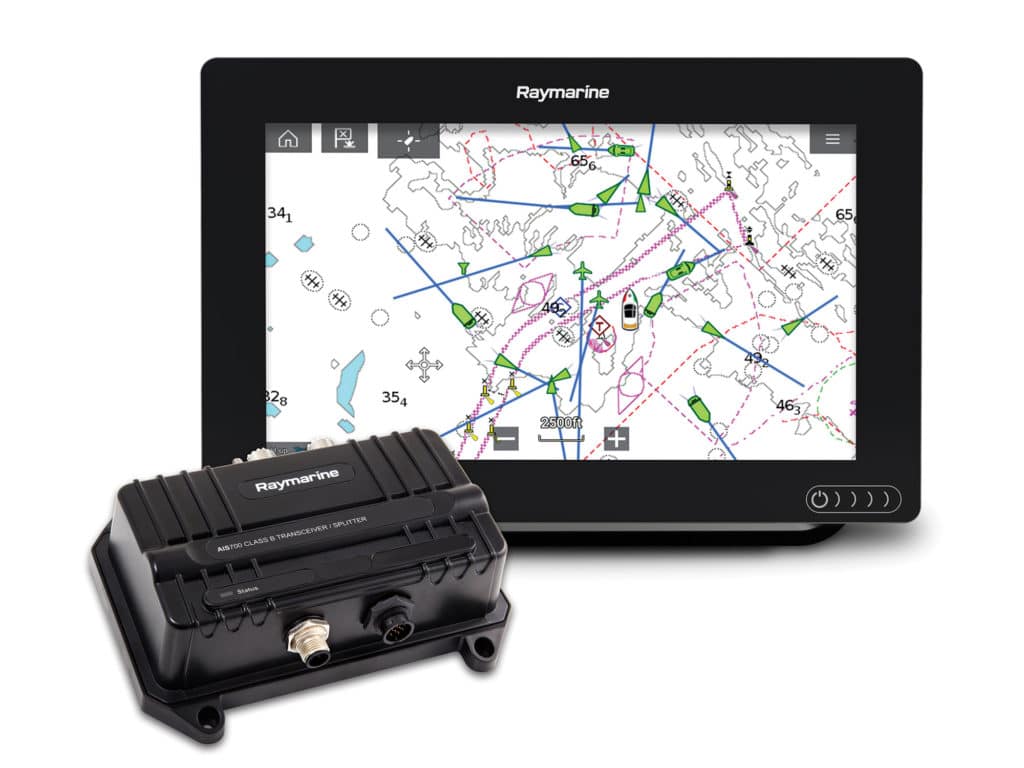
Another recent and positive change has been the integration of AIS within some VHF radios. “I’m pleased that regular VHF manufacturers are putting AIS on radios—it costs nothing, and look at the benefits,” says Jorge Arroyo, a US Coast Guard program analyst who helps develop AIS regulations and standards. He says we eventually might see VHF radios with listen-only AIS receivers for less than $200.
In 2019, Vesper Marine unveiled its revolutionary Cortex safety and communications platform. It put AIS, cellular, Digital Selective Calling, VHF and Wi-Fi communications onto a single, user-friendly software-based platform that combines with a belowdecks black-box processor (with a built-in Class B/SO transmitter), one or more handsets, and two smartphone apps. Cortex users get smartphone-style operations instead of clunky VHF radios buttons and knobs. The system has a touchscreen, six hard buttons, and an iPod-like rotary wheel and central selector. “We were keen to simplify the experience and make it safer to use,” says Carl Omundsen, Vesper’s chief product officer and company co-founder.
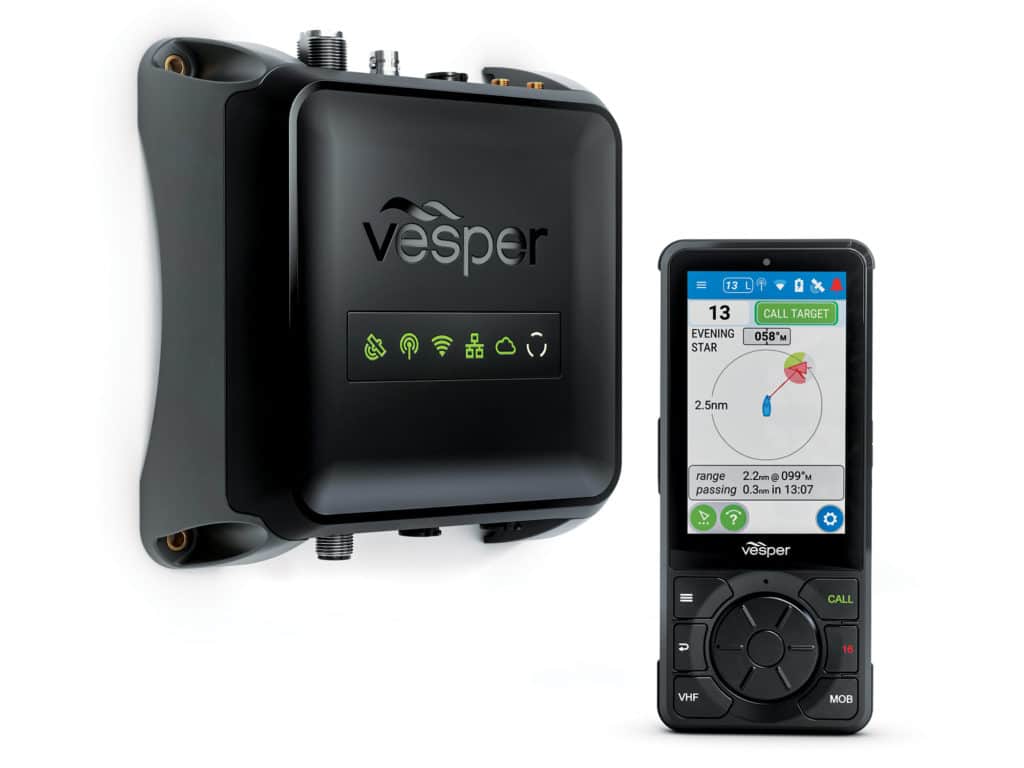
Garmin acquired Vesper in January, largely to acquire Cortex. “We have no plans to change the current product,” says Dave Dunn, Garmin’s senior director of marine sales.
While crystal balls are in short supply (must be the microprocessor shortage), it’s fair to say that other manufacturers will emulate Cortex’s smartphone-esque user interface. It’s also fair to say that the sheer volume of AIS transmissions will increase in coming years as more users adopt the technology for more applications.
In addition to collision avoidance, AIS is also used for critical jobs such as alerting crews and nearby vessels of man-overboard and life-raft scenarios, marking fishing gear, and advising mariners of navigable dangers. The Coast Guard and other international agencies regularly employ AIS to electronically augment aids to navigation, and to electronically mark other points of navigational interest. There are currently more than 500 electronic AIS aids to navigation in the United States, Arroyo says, and they’re supplemented with at least another 100 during hurricane season, for things such as reopening ports after storms.
“The USCG has them all over, on both coasts,” says Jeff Robbins, Vesper Marine’s CEO and co-founder.
These electronic aids to navigation can also use AIS to transmit Application Specific Messages, which can automatically appear on navigation displays. For example, ASMs can deliver local notices to mariners information or be used to cordon off dredging areas.
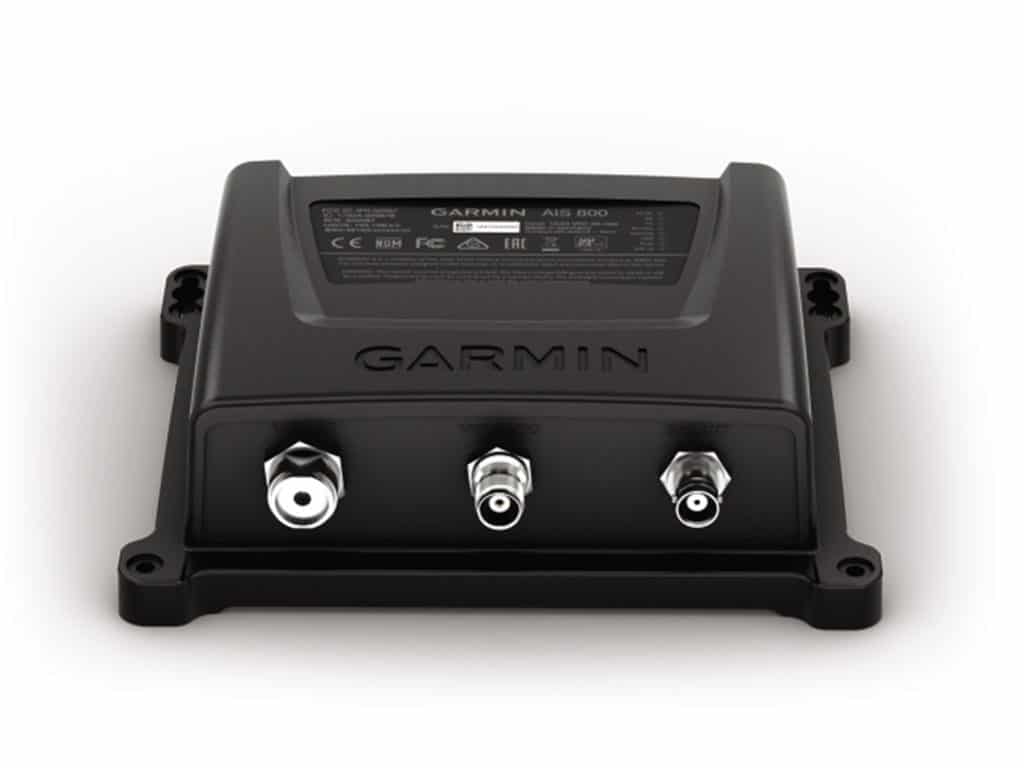
While these are all smart ways of using AIS capabilities, VHF maritime channels 87B and 88B have only so much bandwidth. To address this issue, international bodies, including the Coast Guard, have been working to create the VHF Data Exchange System (VDES). This two-way communications system, once operational, will allow ships, satellites, and shore stations to transmit and receive high-speed data in a sort of super-AIS data ecosystem.
In this brave new world, which is expected to begin unfurling between 2025 and 2035, users will be able to buy a single VDES box that will bundle multiple communication frequencies (similar to how smartphones juggle Wi-Fi, cellular and Bluetooth frequencies).
“The goal with VDES is to move traffic off AIS so that AIS is only for collision avoidance,” Arroyo says. “All other traffic will be moved to VDES channels.”
VDES will have four structural components: AIS, VDE Satellite, VDE Terrestrial and ASM channels. VDES will collectively occupy 18 frequencies: two for long-range (satellite) AIS, two for regular AIS, two for ASMs, six satellite uplink channels and six satellite downlink channels.
“The AIS frequencies will remain for government data. The others are open,” Arroyo says. “Real-time weather could be the killer app.” His hope is that ships will be able to broadcast their real-time weather information and create mesh networks that repeat this data across to shore stations and to satellites.
While VDES promises to carry a lot of data, today’s AIS equipment will continue to operate safely long after VDES rolls out. “VDES is in the stratosphere, but it will trickle down,” Dunn says.
And Cortex is already built to receive and decode eight channels in parallel. “We are currently using five, so there are three in reserve,” Omundsen says. “In 10 years, no one will know or care about AIS—it will just be cool functionality, along with VHF, DSC and VDES.”
As with most communications technologies, VDES is internationally regulated, but the features are evolving faster than the regulations do. This means that AIS will be rolled into a bigger communication platform, and its safety margins should improve as other communications are moved to separate frequencies.
And if Arroyo’s “killer app” concept of relaying real-time weather is realized, this data could possibly be helpful to government agencies for weather forecasts and modeling.
While these upsides are big, the downsides are minimal. Existing AIS transmitters and listen-only receivers will continue to provide collision-avoidance awareness, so there will be no immediate need to upgrade hardware. VDES boxes won’t be free, of course, but—given that they will likely be software-based platforms (like Cortex)—they should come ready for future upgrades.
So, if you’re in the market for a new AIS setup, consider a Class B/SO transmitter. If you’re an early adopter, Cortex will put you ahead of the pack right now.
If your AIS and VHF radio equipment is contemporary, just continue watching this space. The future of VDES looks bright.
David Schmidt is CW’s electronics editor and occasionally writes on other gear topics.
Antenna Matters
“AIS works only as well as its antenna system,” says Raymarine’s Jim McGowan, adding that it’s best to invest in an antenna designed for AIS. “Running a dedicated antenna is better” than employing an AIS/VHF splitter. McGowan points to Digital Antenna, Glomex and Shakespeare as good places to start shopping.
Vendor List
- Digital Antenna; call for pricing
- Garmin; from $700
- Glomex; from $90
- Raymarine; from $600
- Shakespeare; call for pricing
- Vesper Marine; call for pricing

